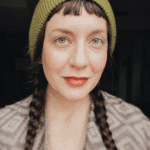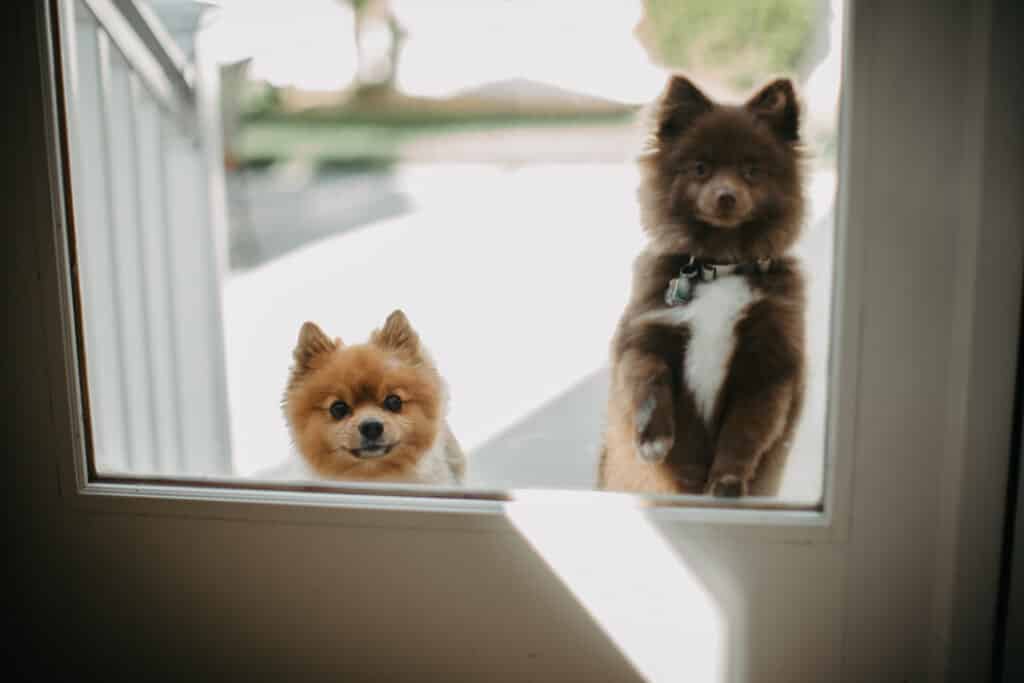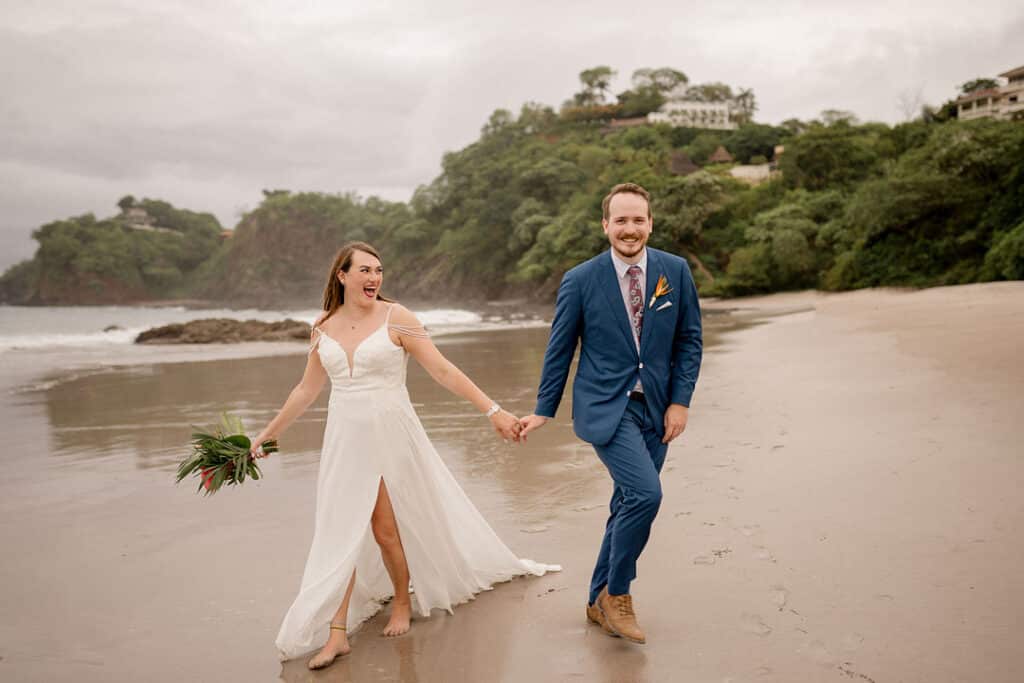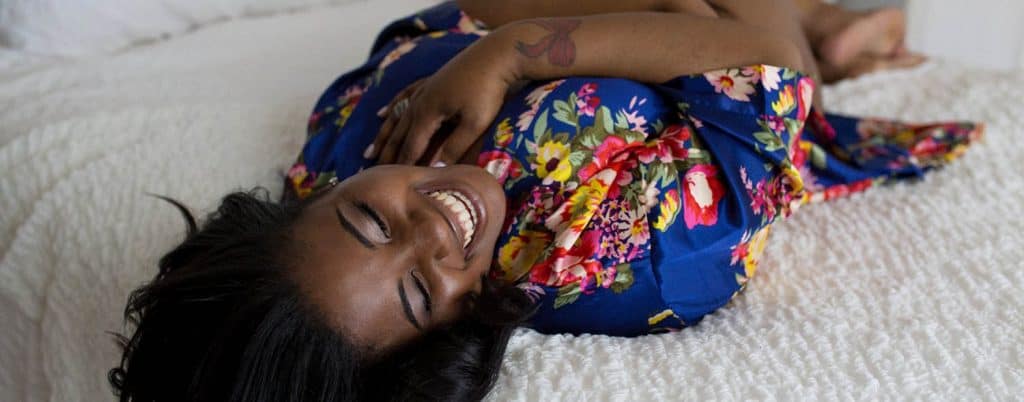
Want to become a boudoir photographer? Give your clients a boudoir photography experience that’s empowering and ethical, and you’ll have clients for life!
Are You Ready to Start Your Boudoir Business?
Maybe you’re just now dipping your toe into boudoir waters. Or maybe you’ve been booking boudoir photoshoots for years and simply need to refresh your approach. Either way, we’re here for it!
Keep reading, and we’ll help you develop a boudoir photography business with:
- two secrets to an incredible customer experience
- purpose-driven marketing that really WORKS
- photography that delivers more than “pretty pictures”
Let’s get started!
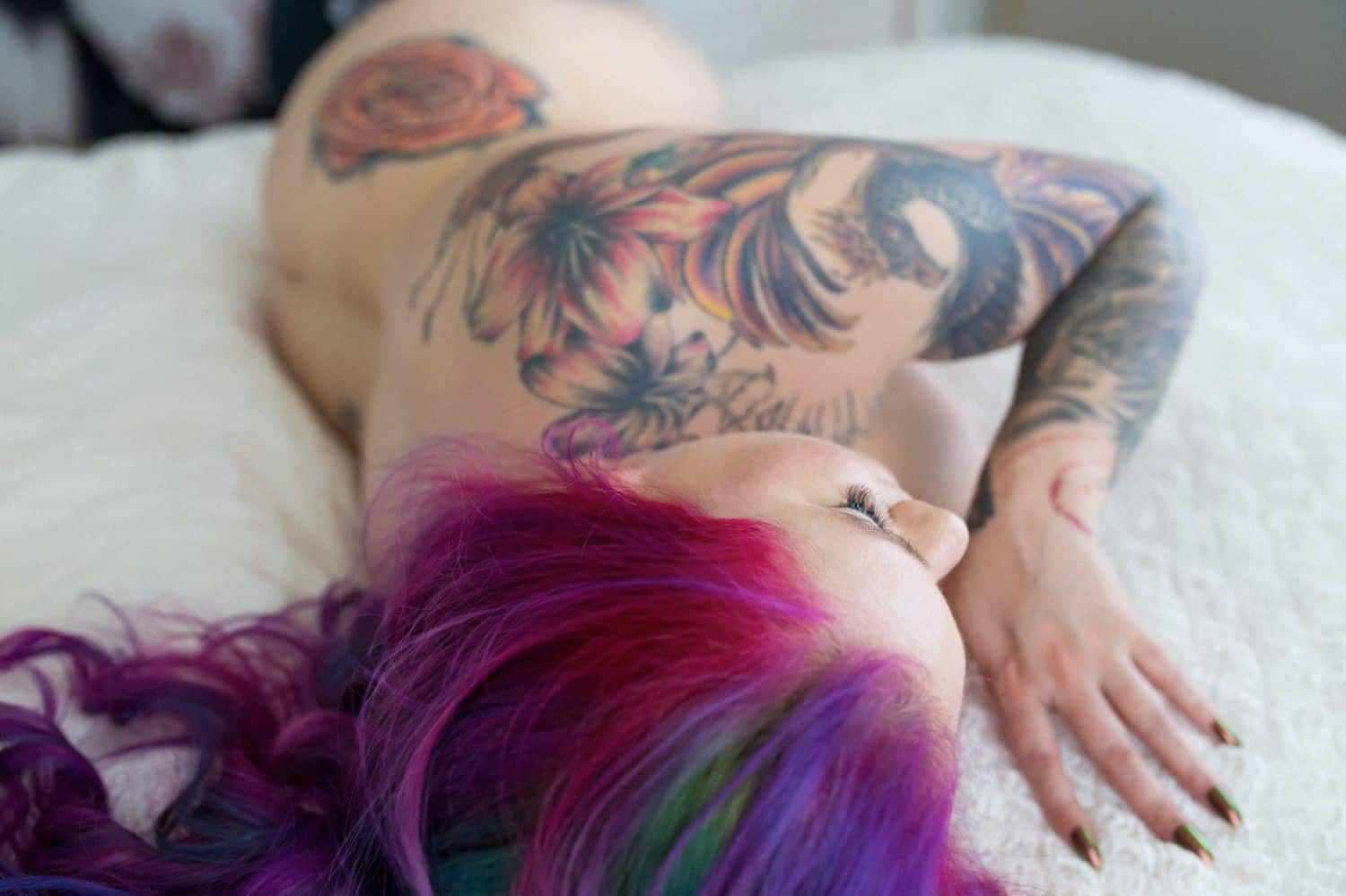
The Empowerment Photographer
2 Secrets to a Thriving Boudoir Photography Studio
Boudoir photography is tricky. Sure, wedding photography, family portrait photography, commercial photography… every type of photography has its quirks. But boudoir photography can get messy really quickly if you don’t have the rest of your house in order.
Here’s what we mean.
#1: Create a Community of Boudoir Photography Fanatics
You can’t build your photography business without a portfolio, but it isn’t always easy to find clients who are willing to be seen and shown in next-to-nothing! That’s why Kansas City, Missouri, entrepreneur Kinzie Ferguson created the Empowerment Studio, a Facebook group, and femme-centric safe space for womxn and non-binary humans.
As the Empowerment Photographer, Kinzie believes body confidence is a practice—one that begins before the session and continues long after.
Empowered Community is Good Community
“I built an online community around this mission of showing bodies and showing up in photos,” says Kinzie. “When people join the Empowerment Studio, they discover two different types of images. First, they see boudoir photographs that show fat bodies and thin bodies and everyone in between. We don’t hide stretch marks or scars or rolls or curves; we love on them.
“Second,” Kinzie continues, “they find entire threads of selfies: a beautiful roundup of humans of all genders and all body types. We conduct regular #SelfieToSelfLove challenges to encourage all of us (myself included) to take up space; to show up in photos and in our lives, un-Photoshopped, un-makeupped, and unashamed.”
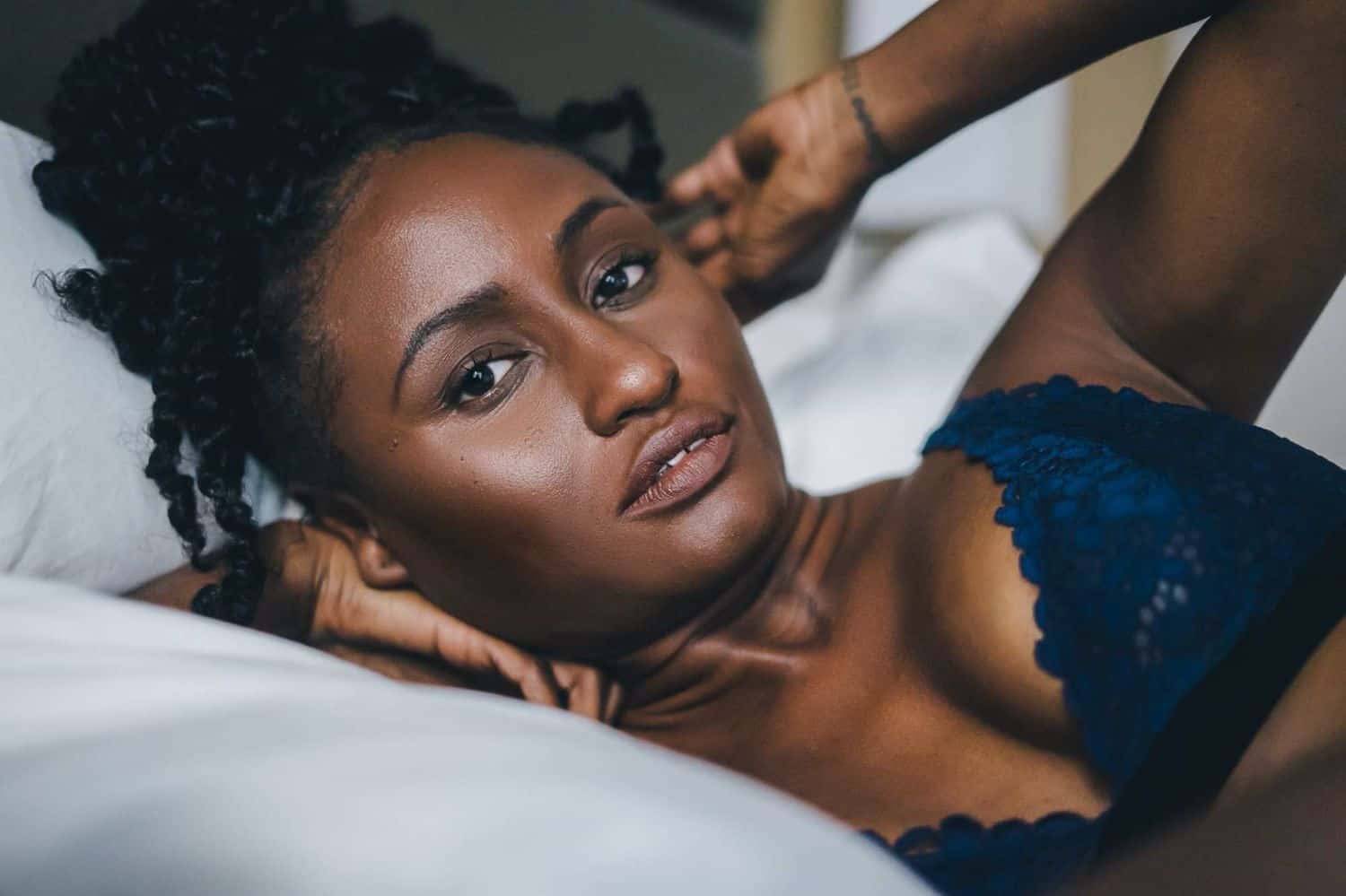
A model photographed byToni Black
Change the Narrative
If this sounds like overkill to you, consider this: Kinzie’s online community has amassed more than 4,000 members, and more people join every day.
“People are relieved when they find the Empowerment Studio community,” Kinzie tells me. “It’s like they can finally breathe. Because you get home after a long day, and you see your cellulite, and you see your rolls, and you see the parts of your body that just feel so tired. And the visual media we consume doesn’t do tired. It doesn’t do cellulite or rolls or wrinkles or scars. So it’s easy to think, No one else is like me. But the Empowerment Studio community changes that.”
Kinzie isn’t trying to make everyone fall in love with every single part of themselves. We all wrestle with how to be gentle with our perceived flaws and faults, bumps and bruises. After all, what is a boudoir session if not a direct confrontation of all our naked-at-school dreams?
“We’re not going for total body love,” Kinzie clarifies. “What we’re going for is body acceptance and neutrality. We want total body liberation.”
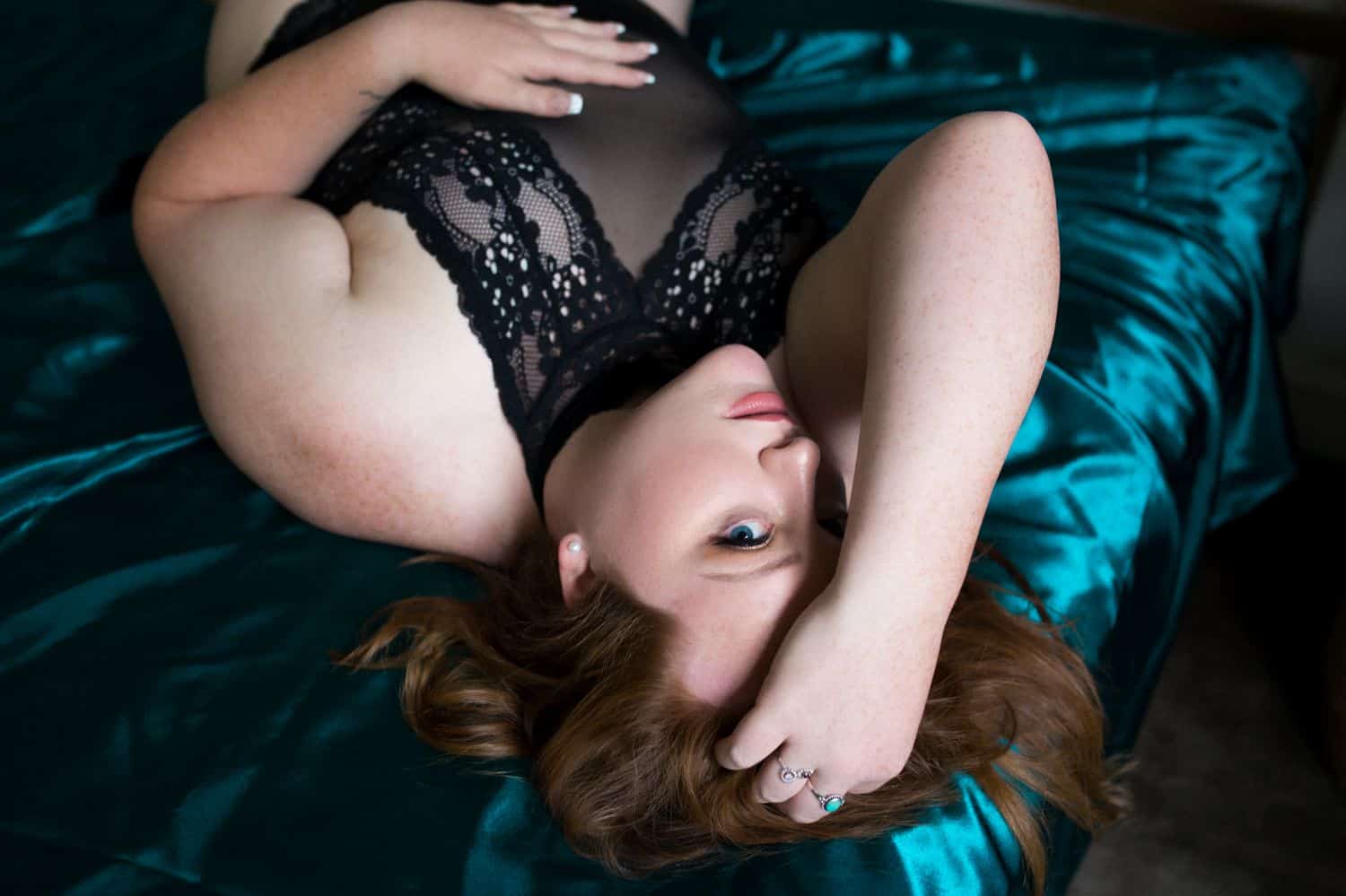
The Empowerment Photographer
Here’s How to Launch Your Community
Before you slap together a Facebook group for your boudoir business and invite all your friends, take the time to outline your ideal boudoir business community. Here are some considerations:
- What is your community’s prevailing theme or message?
- Can you create regular content that supports that message? (“Content” means your community posts and prompts.)
- Who is welcome to join your online community?
- How will you ensure your community is a safe space for its members?
- What are your community rules?
- How will you promote your boudoir photography business within the community?
- Will your community be public or private? (Private groups provide the ultimate level of intimacy.)
Kinzie’s community is built around her passion for “radical self-acceptance among women and femmes (queer individuals who present in a traditionally feminine manner) and non-binary folx.” Your community might emphasize sensuality, athleticism, or individuals whose scars have made them afraid to show up in photos. Or maybe you target couples with an emphasis on relationship-building, or men who need to feel at ease in their own skin, or working parents and professionals who need to take time for themselves for a change.
Done Right, Your Community will be Your #1 Source of New Photography Business
However you craft your boudoir photography community, remember: your community is your number one resource for connecting with legacy, new, and potential clients. Just think of the incredible word of mouth! Your community is both a safe space and a boudoir photography marketing machine. With attention and care, your boudoir business and community will grow and evolve for years to come.
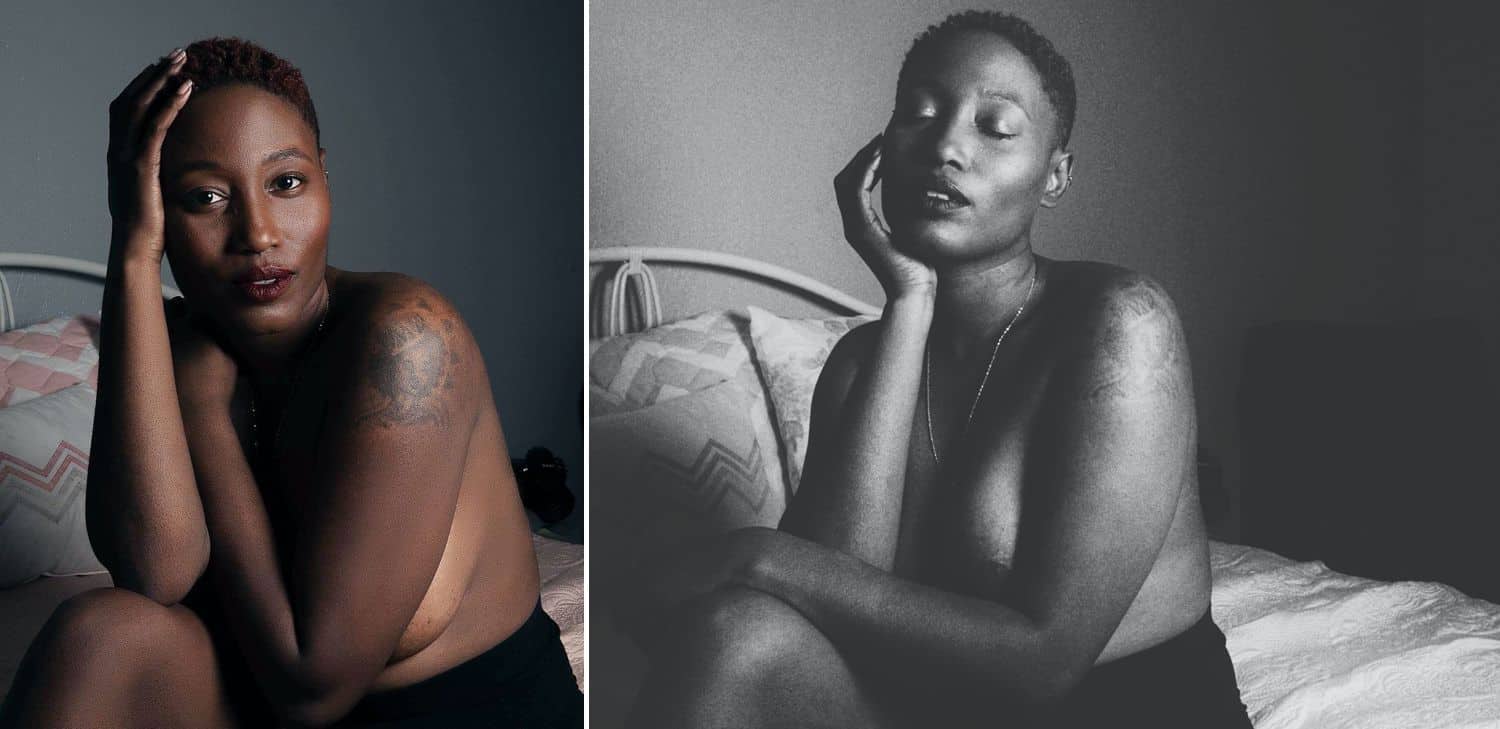
Self-portraits by Toni Black
#ShootProofPRO Tip: What to Post in Your Community
Keep your community alive with actionable posts! Try these interactive ideas, inspired by Kinzie:
- selfie challenges (“Share a makeup-free photo of yourself that you love!”)
- adventure challenges (“Post a photo of what you did this weekend!”)
- empowerment challenges (“Post a sexy selfie—and compliment others who post!”)
- inspiration challenges (“Share your favorite empowering quote!”)
- sneak peeks of final images (but only with your client’s permission)
- before-and-after boudoir photography images (again—get that model release!)
- behind-the-scenes moments of you hard at work (boudoir is more than making sexy photos!)
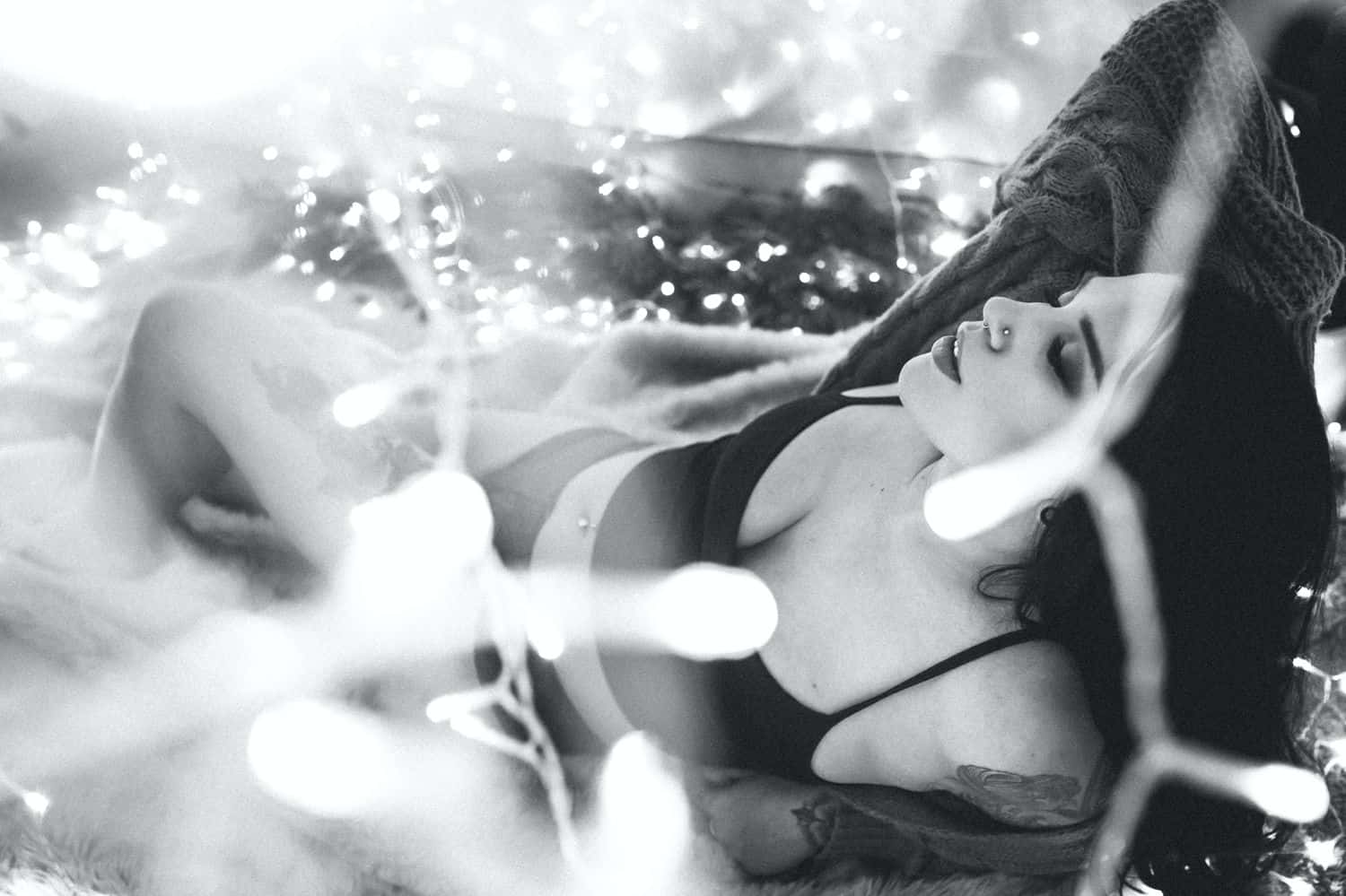
The Empowerment Photographer
#2: Craft Your Boudoir Portfolio
Your portfolio is critical to establishing yourself as a photographer for this niche. These sample boudoir images prove to potential clients that you know how to manipulate flash and natural light, that you’re familiar with boudoir poses, and how to make your subject feel amazing.
We’ll show you where to start.
The “UN-portfolio” Portfolio
Magic maker and intimate lifestyle photographer Toni Black opts for a unique approach when marketing to her Dallas and Houston, Texas, audience.
“I don’t share my client work because I feel like it’s so vulnerable,” Toni tells me. “That’s one of the ways that I create a safe space for my boudoir clients: through the language I use and the work I show.”
Instead, Toni shares an array of exquisite self-portraits and model sessions shot specifically for her online marketing. “If my client wants to put her boudoir photos on her social media, that’s up to her,” Toni states. “But me? I won’t do it. That’s not for me to decide.”
Each selfie boudoir portrait Toni makes is a critical piece of her marketing strategy.
“I’m an artist, and I’m sensitive about my ish,” admits Toni. “Putting myself out there is vulnerable; but I made the choice to put myself out there because I was like, if I can show my vulnerability, then I can show other women that they can be vulnerable.”
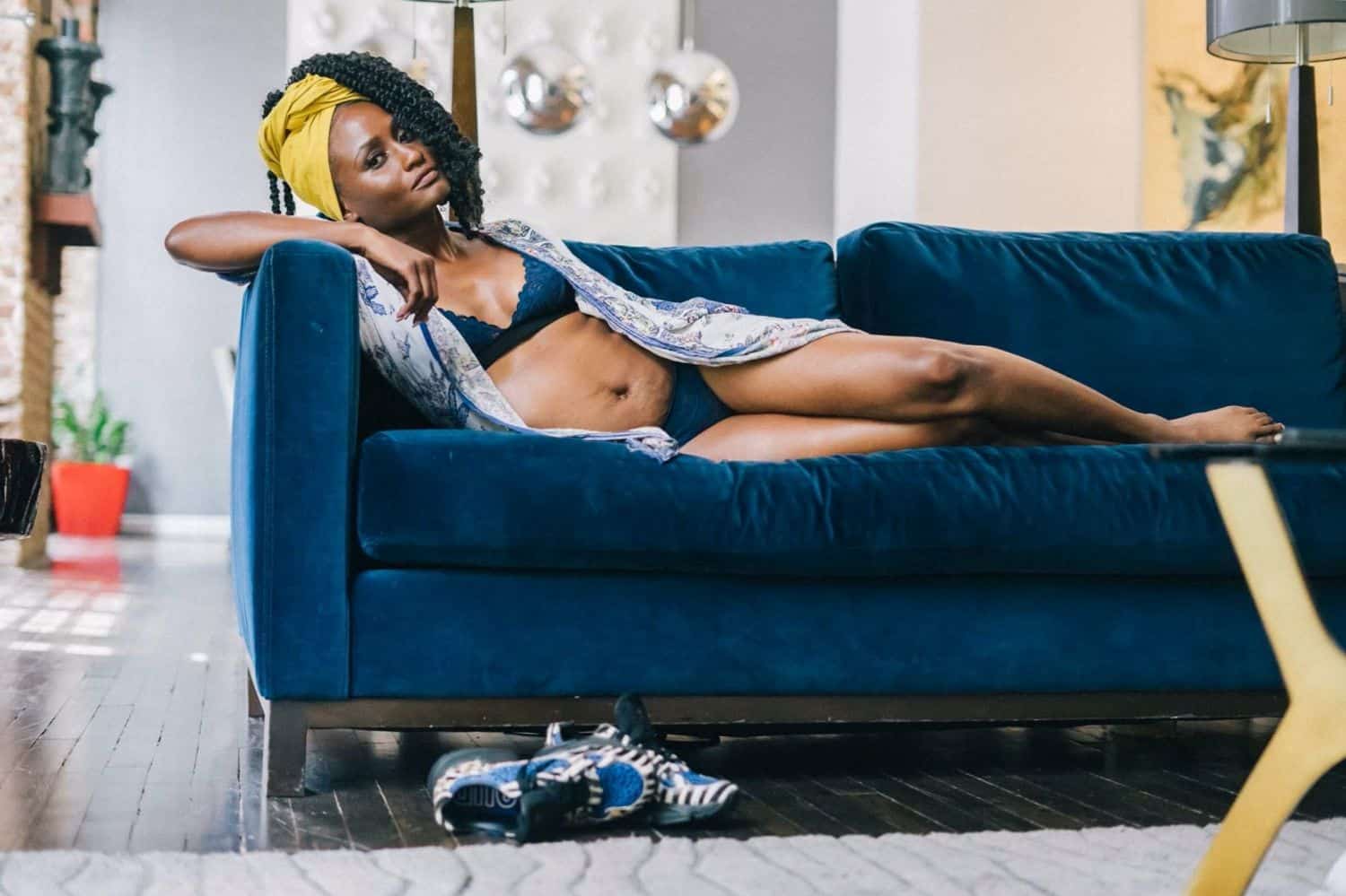
A model photographed by Toni Black
Model Calls: A Community Service
Just as Toni reveals herself through her portfolio, Kinzie reveals herself through regular engagement in her Empowerment Studio community, posting her own selfies for the group to see. While this motivates many people to book her throughout the year, Kinzie also hosts annual model calls–boudoir sessions designed specifically to maintain her portfolio.
Kinzie’s model calls offer discounted or waived boudoir session fees in exchange for permission to feature these boudoir clients’ images in the Empowerment Photographer’s portfolio. People who have never before been photographed by Kinzie love the opportunity to indulge in a boudoir session for a smaller investment.
Make the Model Release Your BFF
Of course, no matter who, how, or why you photograph someone, you need a model release if you want to use those images for marketing. Instead of slyly slipping model release language into your photography contract or trying to convince people to sign, develop a brand around a movement your clients will want to promote.
“I never want people to feel like they need to sign a model release just so I can have marketing photos,” Kinzie says. “But I’m finding more and more of my clients are like, Yeah, people need to see bodies like mine, people need to hear stories like mine, let’s use this to keep this movement going. And that’s a really powerful thing, to watch people achieve that comfort level with photography.”
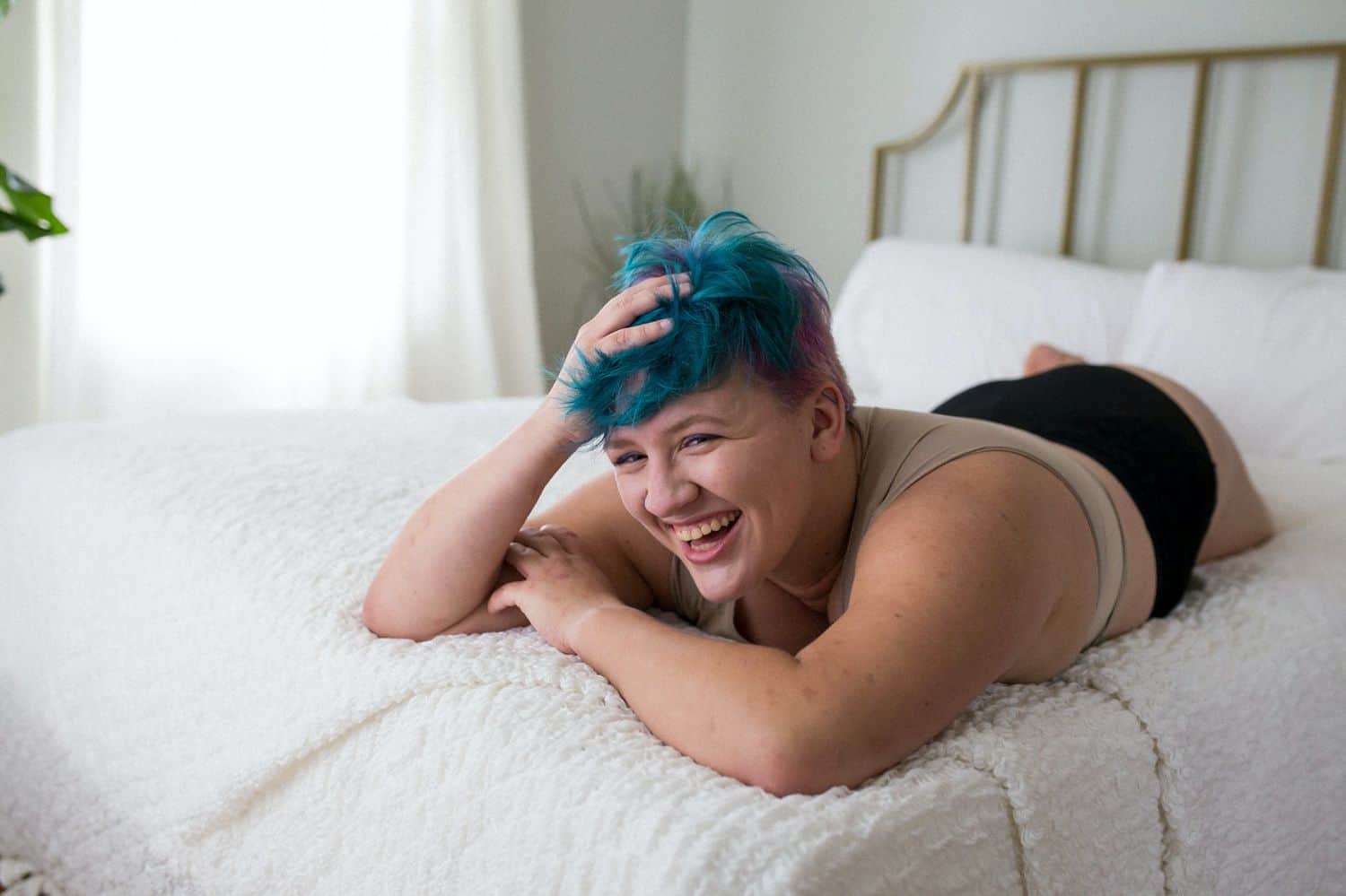
The Empowerment Photographer
Know EXACTLY Who You’re Marketing To
Before you fill your calendar with model sessions and self-portrait exercises, you 100% absolutely no-doubt-about-it MUST know your target audience. You wouldn’t fill your portfolio with newborn portraits if you wanted to shoot weddings, would you? (That’s rhetorical.) Then don’t fill your portfolio with photos of clients who aren’t your ideal demographic. Reach directly into the heart of your customer base with images that feel familiar, accessible, achievable, and worth investing in.
Today, Toni almost exclusively photographs Black women. “I used to live in Hawaii, and there I photographed everybody,” Toni explains, “but I realized: Black women are largely unseen. Our voices are unheard of. And especially in the boudoir community, we are just not visible.” Toni pauses to let that sink in, but I already know she’s right.
Only a couple of weeks ago I evaluated over 240 submissions from photographers wanting to be featured on this very blog. A grand total of two submissions featured people of color.
By devoting her art and her energy specifically to Black women, Toni is filling a gap in the market that desperately needs filling.
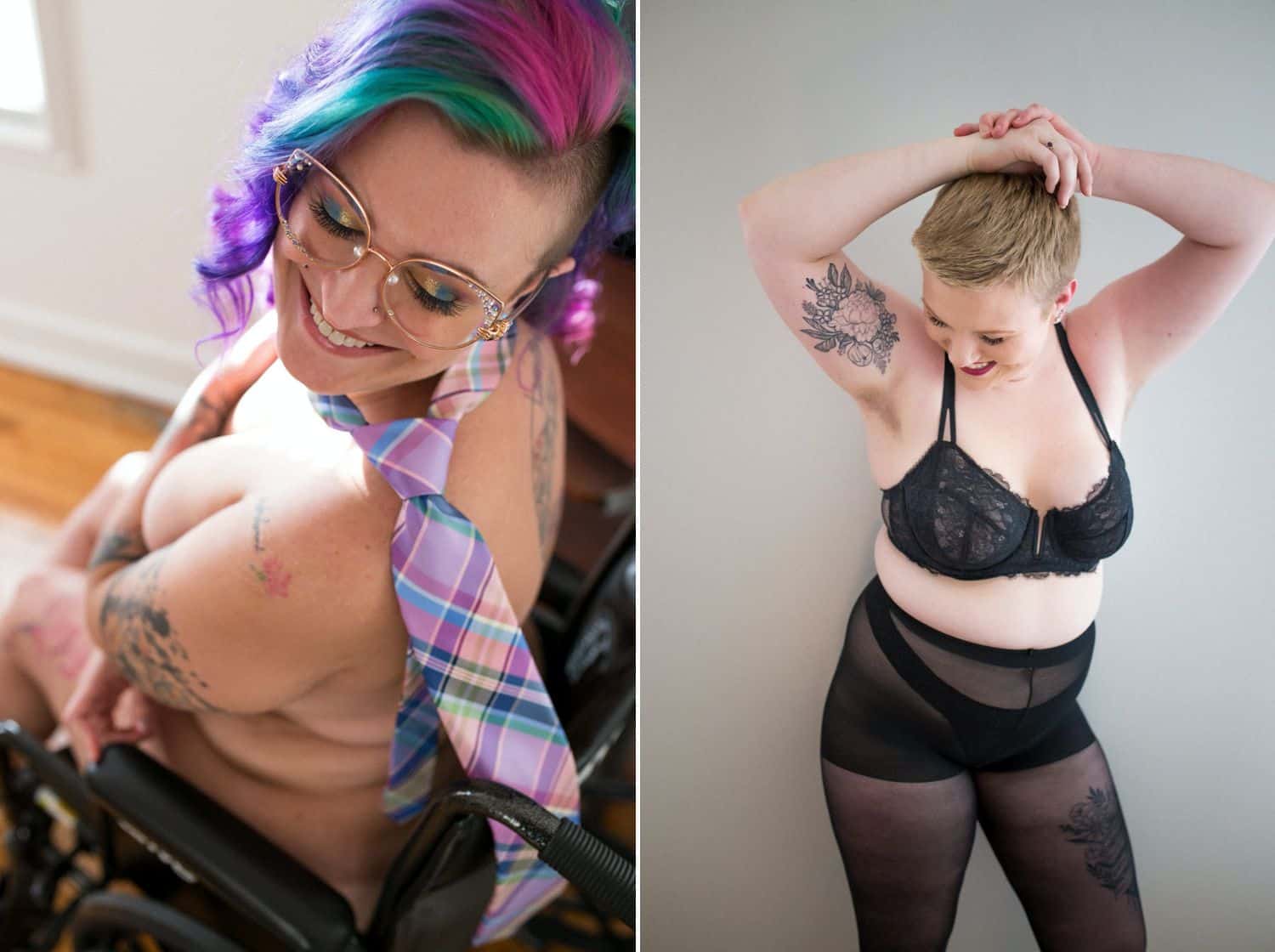
The Empowerment Photographer
What Does it Mean to Diversify Your Portfolio?
Market gaps are frequently mentioned as a means of finding your niche. Wanna photograph puppies wearing socks? There’s a market for that! Resolved to focus on clients over six feet tall who wear Birkenstocks? There’s a market for that, too. (Well, maybe. But you get my point.)
In other words, a “diverse” portfolio doesn’t always result in more or better clients. The best clients are the ones who share your worldview and value your art. And that may mean you need to narrow your focus even more than you already have.
“I used to be so aware that my portfolio was very white,” acknowledges Kinzie. “But when you put out a model call out for people of color, you are, in essence, inviting a Black person to be tokenized for your portfolio. And that’s not cool.”
Through research and self-examination, Kinzie learned that diversification wasn’t actually a portfolio matter. “Look at your portfolio,” Kinzie instructs. “Is it too white? Now look at your life. Is it too white? Then that’s where you start.
Start diversifying there—in your everyday interactions and priorities.”
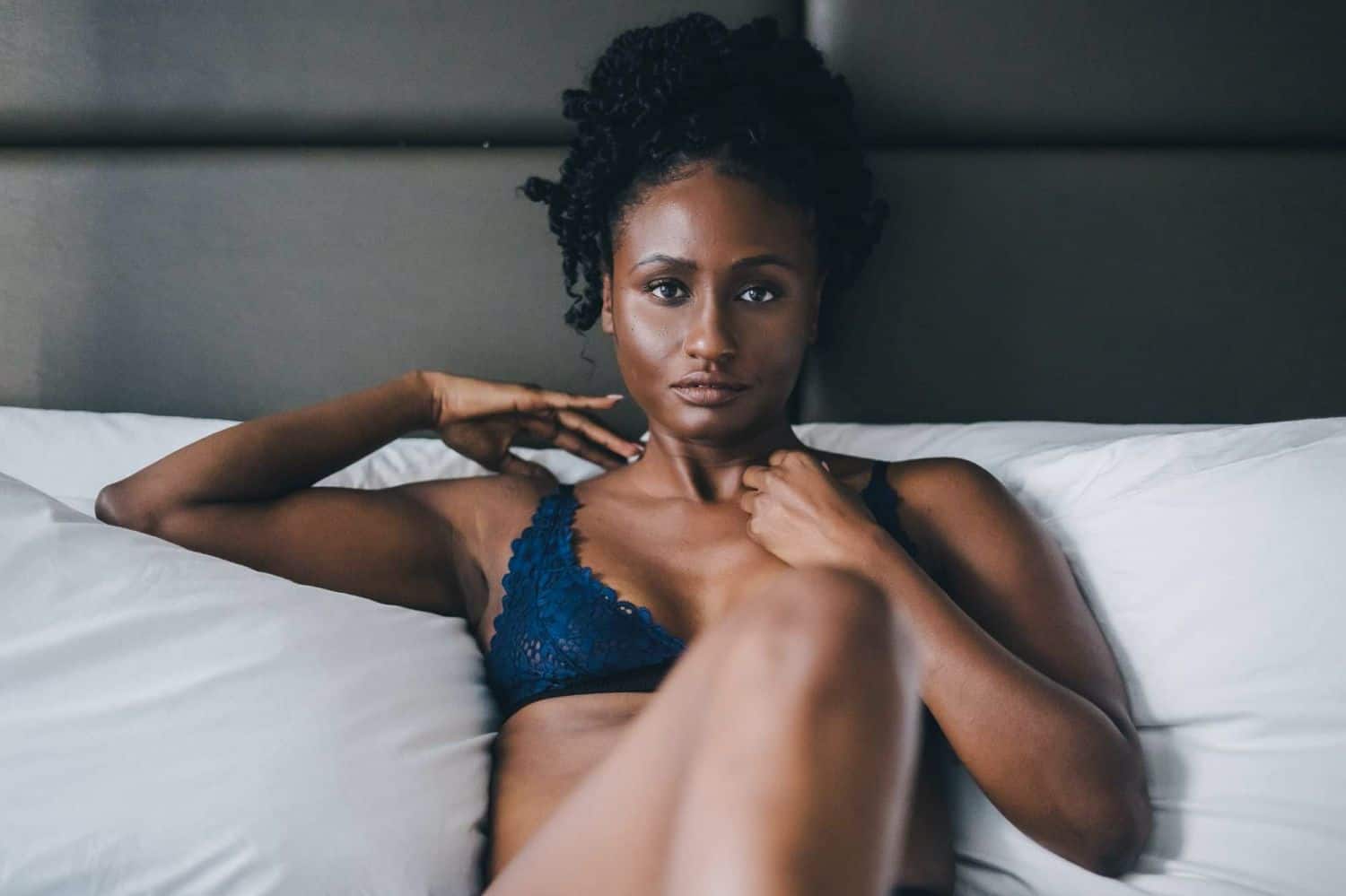
A model photographed by Toni Black
The #1 Rule of Boudoir Photography
If there’s one irrefutable rule for today’s boudoir photography business, it’s this: don’t be a creep.
Sounds obvious, right? Unfortunately, far too many boudoir photography clients have experienced discomfort and even abuse from their “professional” photographer.
Toni didn’t shy away from discussing the darker side of the photo industry. “There are highly-paid photo pros out there with hundreds of thousands of followers, who are published in magazines and praised as being at the top of the industry,” says Toni. “But I think that if women step back and look at how they’re being portrayed, it’s not actually something that makes anyone feel empowered.”
A Lesson in Bad Boudoir Behavior
The New York Times first reported on obscene photographer behavior in 2017, as the #MeToo movement found its first significant foothold. This was followed by Cosmopolitan’s #ThatsHarassment campaign, then W magazine was one of many publications to out several elite shooters accused of predatory behavior. BURO 24/7 published a list of six celebrity shooters accused of sexual harassment—one of whom I once spent an afternoon with, making the story even more personal than it already was. Fstoppers shared a video on avoiding creepy photo situations. And in July of 2020, Insider revealed one photographer’s penchant for soliciting nudes from Tumblr fans. (He apologized. *Insert eye roll.*) Last but not least, DIY Photography’s website has a sexual-harassment tag going back to 2017—just in case you didn’t think this was a widespread problem.
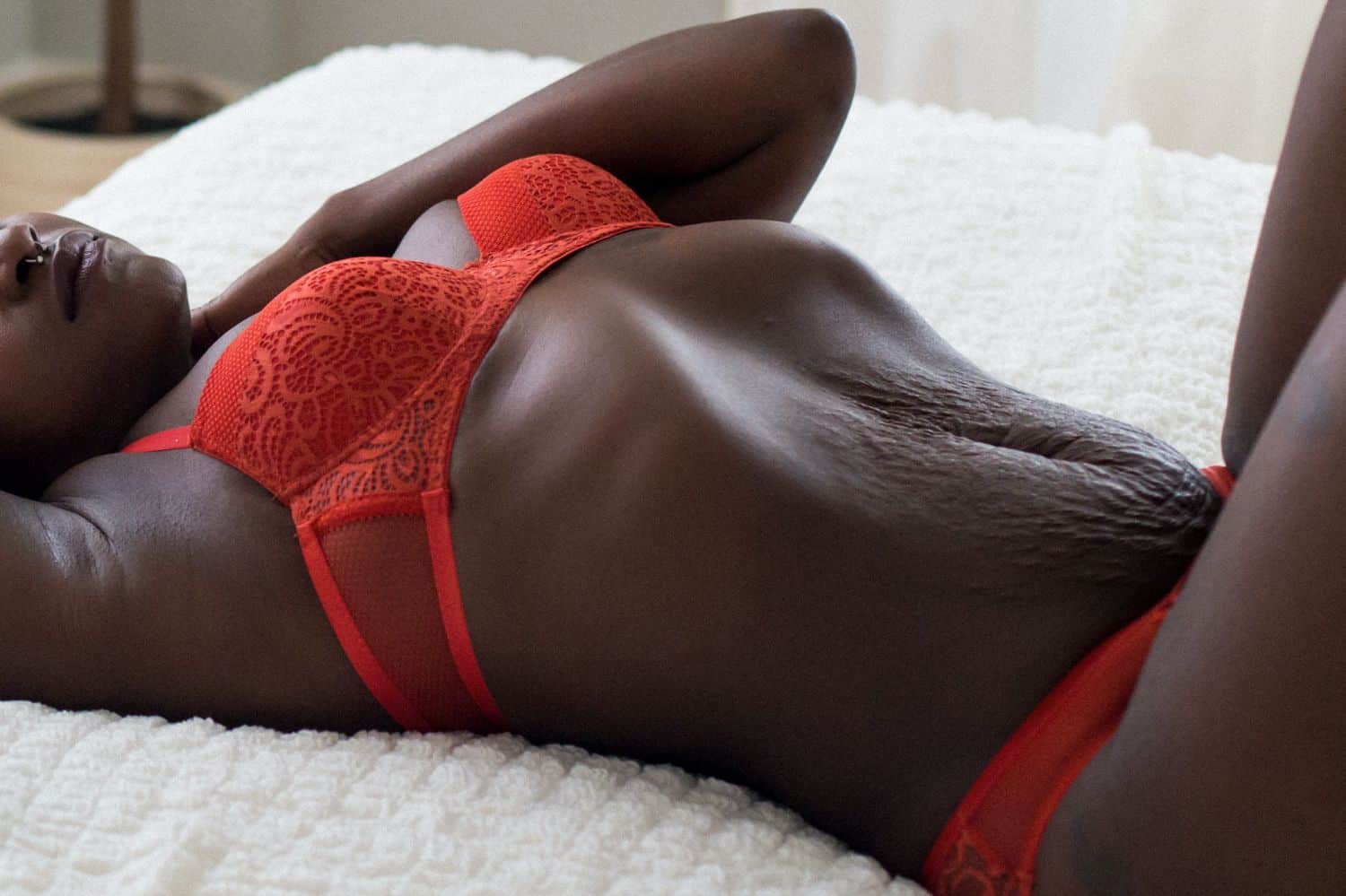
The Empowerment Photographer
How Can You Become a Boudoir Photographer? Craft an Ethical Boudoir Experience
Every photography business should do a deep dive into their brand, and establish a set of core values. Core values should guide not only your day-to-day priorities and interactions, but also your brand and product strategies over time.
If you’re just now adding boudoir to your photography business repertoire, you need a set of clear values more than most, because the work is inherently intimate and vulnerable.
Statistically, nearly one in five of your female clients are sexual assault survivors. Yet most boudoir shooters overlook this grim reality in favor of bubbly and false eyelashes, when what their clients really need is a safe space where they can be seen, heard, and valued as whole humans.
“If I say that I’m an advocate for my clients, for Black women, for all women, then I can’t be silent,” Toni emphasizes. “It’s my responsibility to speak up, because I have a voice. And if I have a voice, I have to be a voice for people who don’t have a voice. As photographers, it’s our responsibility to call out people who are being harmful. It’s our responsibility to call out people who are being horrible, people who are being harmful to their clients. We have to make note and say, I see you.“
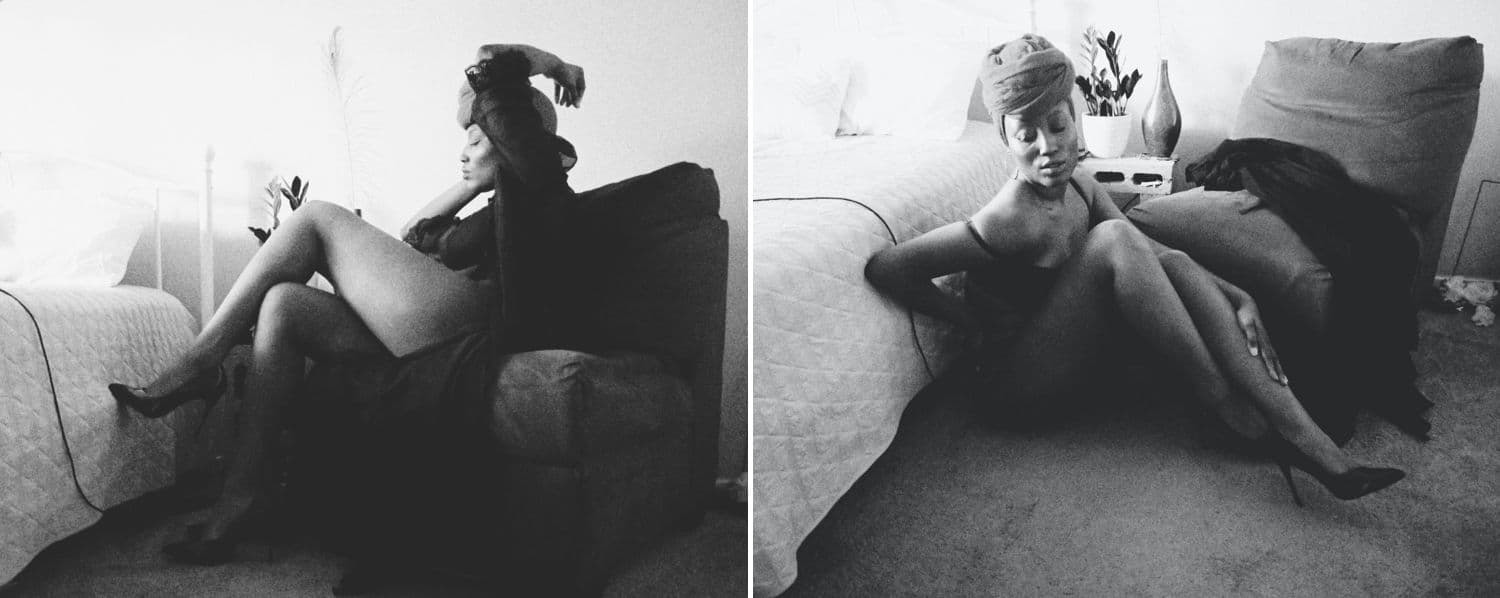
Self-portraits by Toni Black
Be a Boudoir Brand with a Cause
Statistics are all over the place depending on what you type into Google, but the numbers don’t lie: most consumers prefer to spend money with brands who stand for something. That something can be anything from pet adoption to eradicating Guinea worm disease.
Maybe it’s because we’re now more socially conscious as a whole. Or maybe it’s just easier to justify a new pair of shoes if that purchase helps support a cause. Whatever the reason, as brands we should be taking this news to heart. We should all be asking ourselves:
- what social causes matter most to me?
- can I incorporate a social cause into my brand strategy?
- how does hiring me help my clients feel connected to that cause?
Be a Brand with Values
“Kindness is a very deep, personal value of mine, both in my personal life and in my business,” says Kinzie. “I’m always asking myself, how you can you be kind about this? How can you be more gentle, how can we welcome in ease?“
Kinzie and Toni both are purposeful in the words they use. If language is a cause, then these photographers are its greatest advocates.
“As creative entrepreneurs, we have to be very careful with how we’re speaking—and not just in our business spaces, but also in our personal spaces,” Toni explains, “because people can sense when you’re authentic. And if you’re not authentic in everything you do, then you can’t create those safe spaces.”
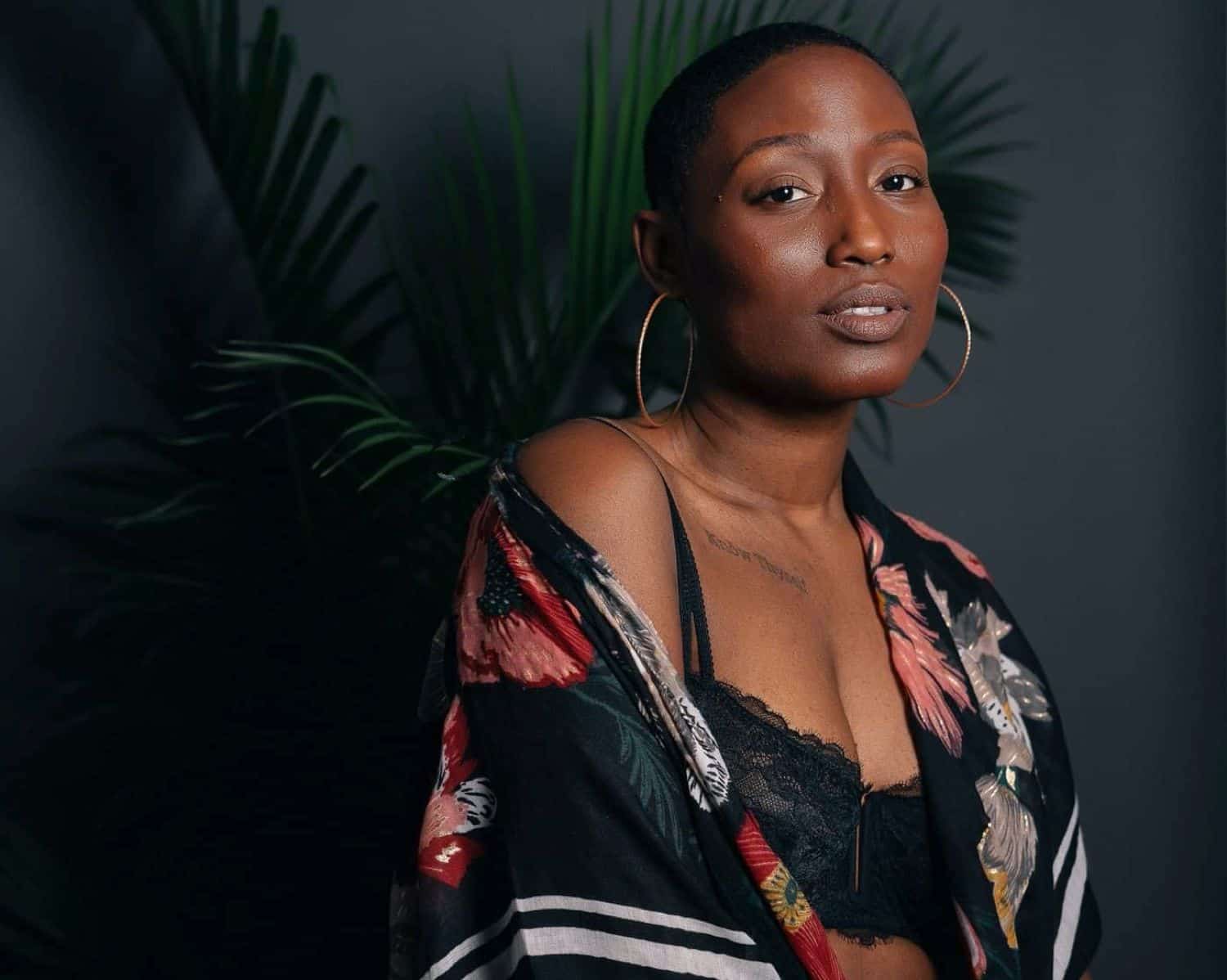
Self-portrait by Toni Black
The Art of Becoming
It’s not an accident that the title of this article is focused on becoming a boudoir photographer. As with every other type of photography, boudoir photographers are not born; they are made. They’re made through long conversations and community building, through authentic inclusion, and through finding your voice, defining your advocacy, and showing up for the hard work of making radically beautiful photographs.
Most of all, a photographer becomes a boudoir photographer by fully embracing the wildly different, wonderfully unique humans who show up to be photographed in all their real, raw, remarkable individuality.
“That’s all I expect of them,” Kinzie tells me before we end our call. “That they’re going to be kind, that they’re going to be gentle with themselves. And, yeah, it’s a hard journey to self-acceptance. But how can we have ease around it? How can we be generous with ourselves in the process?”
Do You Shoot Boudoir?
Comment below and share your suggestions for becoming a boudoir photographer!
Written by ANNE SIMONE | Featuring KINZIE FERGUSON and TONI BLACK

